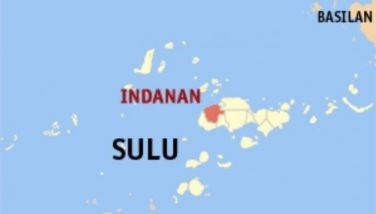DENR warns vs toxins from trees, shrubs
April 5, 2005 | 12:00am
An agency of the Department of Environment and Natural Resources (DENR) has cautioned the public on the poison and toxic substances from shrubs and trees in forests and hills that could cause paralysis and unconsciousness and could also lead to death if they are ingested.
In its publication Useful Plants with Toxic Substances, the Ecosystems Research and Development Bureau (ERDB) said the bead tree, locally known as paraiso, and 11 other forest trees were identified to have toxic substances which can pose risks to human health due to improper handling or plain ignorance about their potential danger despite the trees’ beneficial uses.
The other species are the molave, atis, adelfa, baraibai, ligtang, kuisa, tuba tuba, putat, saging saging, tubang bakod and tubli.
DENR officials cited the need for the public to be aware of these plant species, saying familiarity with them and their economic uses will benefit ranchers, stock raisers, veterinarians and foresters.
"Even with the presence of poisonous substances, these (species) are still beneficial and have special uses to human lives, animals and other living organisms," the ERDB said.
Wood from paraiso is used in making furniture such as cabinets as well as plywood, boxes, tools, handles, small articles and toys.
Toxic substances from adelfa, baraibai, ligtang and atis have been found to cause deaths, while the other species give off substances that can cause vomiting, blindness, paralysis and severe skin and throat irritation.
The pounded bark or leaves of adelfa is effective in treating snake bites, herpes and ringworm, but when ingested could lead to vomiting and even death.
Ligtang has highly poisonous substances found in its leaves, bark, wood, fruits, seeds and even roots. Its wood is widely used in making knife handles and cabinets, and as for fuel.
The toxic substances found in the other plant species have less lethal effects but are widely used as insecticide or pesticide.
For instance, atis seeds contain 45 percent yellow, non-drying oil which is an irritant or poison for lice.
Kuisa or korales, on the other hand, is an ornamental plant used in the production of medicines and as an additive for flavoring tonic wines. — Freeman News Service, Katherine Adraneda
In its publication Useful Plants with Toxic Substances, the Ecosystems Research and Development Bureau (ERDB) said the bead tree, locally known as paraiso, and 11 other forest trees were identified to have toxic substances which can pose risks to human health due to improper handling or plain ignorance about their potential danger despite the trees’ beneficial uses.
The other species are the molave, atis, adelfa, baraibai, ligtang, kuisa, tuba tuba, putat, saging saging, tubang bakod and tubli.
DENR officials cited the need for the public to be aware of these plant species, saying familiarity with them and their economic uses will benefit ranchers, stock raisers, veterinarians and foresters.
"Even with the presence of poisonous substances, these (species) are still beneficial and have special uses to human lives, animals and other living organisms," the ERDB said.
Wood from paraiso is used in making furniture such as cabinets as well as plywood, boxes, tools, handles, small articles and toys.
Toxic substances from adelfa, baraibai, ligtang and atis have been found to cause deaths, while the other species give off substances that can cause vomiting, blindness, paralysis and severe skin and throat irritation.
The pounded bark or leaves of adelfa is effective in treating snake bites, herpes and ringworm, but when ingested could lead to vomiting and even death.
Ligtang has highly poisonous substances found in its leaves, bark, wood, fruits, seeds and even roots. Its wood is widely used in making knife handles and cabinets, and as for fuel.
The toxic substances found in the other plant species have less lethal effects but are widely used as insecticide or pesticide.
For instance, atis seeds contain 45 percent yellow, non-drying oil which is an irritant or poison for lice.
Kuisa or korales, on the other hand, is an ornamental plant used in the production of medicines and as an additive for flavoring tonic wines. — Freeman News Service, Katherine Adraneda
BrandSpace Articles
<
>
- Latest
- Trending
Trending
Latest
Trending
Latest
Recommended































